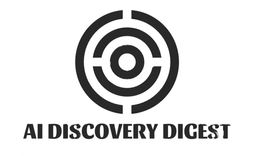Welcome to the world of artificial intelligence (AI), where innovation and possibilities seem limitless! From self-driving cars to virtual assistants, AI has become an integral part of our lives. But did you know that this incredible technology is also revolutionizing the publishing industry? That’s right – AI is expanding the reach of published content in ways we never thought possible.
We’ll explore how AI is being used in the publishing industry, from improving content creation to personalization and targeting. Get ready to dive into the exciting world where machines are helping us create, distribute, and understand content like never before!
How AI is Being Used in the Publishing Industry
AI is revolutionizing the publishing industry, bringing new possibilities and opportunities for content creators. One way AI is being used in publishing is through automated content creation. With AI algorithms and natural language processing capabilities, publishers can now generate articles, blog posts, and even books at a rapid pace.
Another aspect of AI’s role in publishing lies in personalization and targeting. By analyzing user data and preferences, AI can tailor content to specific audiences, ensuring that readers receive relevant information that resonates with their interests. This level of customization allows publishers to deliver more engaging experiences to readers while also increasing reader loyalty.
In addition to content creation and personalization, AI-powered analytics provide valuable insights for publishers. Through machine learning algorithms, publishers can analyze reader behavior patterns, identify trends, and optimize their editorial strategies accordingly. This data-driven approach enables publishers to make informed decisions on topics such as content distribution channels or optimal timing for publication.
While there are many benefits to using AI in the publishing industry, ethical considerations arise as well. There are concerns about biases within the algorithms that power these systems – biases that could influence the type of content produced or how it is targeted to specific demographics. Striking a balance between automation efficiency and human oversight becomes crucial when deploying these technologies responsibly.
Looking ahead into the future possibilities of AI in publishing excites both professionals within the industry and avid readers alike. As technology continues to advance rapidly, we can anticipate further improvements in automated content creation processes as well as enhanced personalization capabilities based on individual preferences.

Improving Content Creation with AI
Content creation is at the heart of any publishing endeavor. It is what drives engagement, captures readers’ attention, and ultimately determines the success of a publication. In today’s fast-paced digital world, keeping up with the demand for fresh and relevant content can be challenging.
This is where AI comes in to revolutionize the process of content creation. With its ability to analyze vast amounts of data in seconds, AI can help publishers generate high-quality content efficiently. By analyzing user behavior patterns and preferences, AI algorithms can identify trending topics and provide valuable insights into what readers are looking for.
AI-powered tools such as natural language processing (NLP) can assist writers by suggesting improvements to their drafts. These tools analyze written text for grammar errors, readability levels, and overall coherence, helping writers refine their work before it goes live.
AI can also aid in generating personalized content tailored to individual reader interests. Through data analysis and machine learning algorithms, AI systems can understand user preferences based on past interactions and deliver customized recommendations or targeted articles that resonate with each reader.
Another way AI improves content creation is through automation. Tasks like keyword research or image selection that used to take hours or even days now only require a few clicks thanks to AI-powered tools. This allows writers more time to focus on crafting compelling narratives rather than getting bogged down by repetitive tasks.
While AI offers significant advantages in improving content creation processes, there are ethical implications that need careful consideration. As we rely more on automated systems powered by algorithms and machine learning models, there is a risk of bias creeping into our published works if not properly monitored.
Personalization and Targeting with AI
Personalization and targeting have become essential strategies for publishers to engage their audience effectively. Thanks to AI technology, this has become easier than ever before.
AI algorithms can analyze vast amounts of data about individual users, such as browsing history, social media activity, and preferences. With this information, publishers can create personalized content recommendations tailored specifically to each user’s interests and needs.
By utilizing AI-powered recommendation engines, publishers can deliver targeted content directly to the right audience at the right time. This not only enhances the overall user experience but also increases engagement and loyalty.
AI enables publishers to segment their audience based on various factors such as demographics or previous interactions with content. This segmentation allows them to target specific groups with highly relevant content that resonates with their interests.
With AI-driven personalization and targeting techniques in place, publishers can optimize their marketing efforts by delivering hyper-focused campaigns. By tailoring messaging and promotions according to individual preferences and behaviors, they are more likely to capture attention and drive conversions.
Personalization and targeting with AI offer tremendous opportunities for publishers looking to expand their reach in a highly competitive landscape. By leveraging the power of artificial intelligence in understanding users’ preferences better than ever before possible manually would allow them not only boost customer satisfaction but also increase revenue through improved conversion rates.
AI-Powered Analytics and Insights for Publishers
AI-powered analytics and insights have revolutionized the way publishers understand their audience and optimize their content. With AI algorithms constantly analyzing data, publishers can gain valuable insights into user behavior, preferences, and trends.
By leveraging AI technology, publishers can track metrics such as page views, engagement rates, click-through rates, and conversion rates in real-time. This enables them to make data-driven decisions about content strategy and distribution. They can identify which articles or topics resonate most with their readers and tailor future content accordingly.
AI algorithms can analyze vast amounts of data from multiple sources to provide deeper insights. Publishers can uncover patterns in user behavior that they may not have noticed otherwise. For instance, they might discover correlations between certain demographics or geographic locations and specific content preferences.
These advanced analytics tools help publishers stay ahead of the competition by identifying emerging trends early on. They enable them to adapt quickly by providing recommendations for creating new content based on popular searches or trending keywords.
It is important for publishers to be mindful of ethical considerations when using AI-powered analytics tools. Privacy concerns should always be addressed when collecting and analyzing user data. Transparency is key in ensuring that users are aware of how their information is being used.
AI-powered analytics has opened up a world of possibilities for publishers looking to enhance their understanding of audience preferences while improving overall content quality.
The Ethical Implications of Using AI in Publishing
Ethical considerations play a crucial role in the use of AI in publishing. As AI technology becomes more sophisticated, it is important to address the potential implications and challenges that arise. One ethical concern is the possibility of biased or discriminatory algorithms being used in content creation or targeting.
AI systems are only as unbiased as the data they are trained on. If this training data contains biases, such as gender or racial biases, it can lead to discriminatory outcomes in published content. Publishers must be diligent and proactive in ensuring that their AI systems are fair and equitable.
Another ethical consideration is privacy and data protection. With AI-powered analytics and personalized targeting becoming prevalent in publishing, there is a need for transparency regarding how user data is collected, stored, and utilized. Publishers should obtain informed consent from users before using their personal information for targeted advertising or content recommendations.
There may be concerns about job displacement due to increased automation through AI technologies. As publishers adopt more advanced AI tools for tasks like editing or proofreading, there could be potential consequences for human workers who traditionally perform these roles.
To address these ethical implications effectively, publishers should establish clear guidelines for using AI responsibly and ethically. This includes regularly auditing algorithms for bias and discrimination, implementing strong data protection measures, providing transparency around data usage practices, and actively considering the impact on employees when adopting new technologies.
Future Possibilities for AI and Published Content
The future of AI in the publishing industry is filled with exciting possibilities. As technology continues to advance, we can expect AI to play an even bigger role in expanding the reach of published content.
One exciting possibility is the use of AI-powered virtual assistants that can help readers navigate through vast amounts of information. These virtual assistants will be able to understand user preferences and provide personalized recommendations for articles, books, and other forms of content.
Another potential application is the use of AI algorithms to automatically generate written content. While this may initially raise concerns about job security for human writers, it also opens up new opportunities for creativity and collaboration between humans and machines.
AI can also help publishers gain a deeper understanding of their audience through advanced analytics tools. By analyzing data on reader behavior, preferences, and engagement patterns, publishers can optimize their content strategies and deliver more relevant experiences to their audience.
As natural language processing capabilities improve, AI could enable real-time translation services that break down language barriers and make published content accessible to a global audience.
With advancements in machine learning algorithms, AI could revolutionize the editing process by quickly identifying grammatical errors or inconsistencies in written works. This would not only save time but also ensure that published content meets high standards of quality.
The future possibilities for AI in the publishing industry are endless. From personalized recommendations to automated content generation and improved analytics insights – AI has the potential to transform how we create and consume published content. It’s important to consider ethical implications such as bias detection algorithms while embracing these advancements.
Conclusion
AI has revolutionized the publishing industry by expanding the reach of published content in ways that were once unimaginable. From enhancing content creation to personalizing and targeting audiences, AI’s capabilities are truly remarkable.
By utilizing AI-powered analytics and insights, publishers can gain valuable information about their audience’s preferences and behaviors. This data allows them to make informed decisions on how to optimize their content strategies, ultimately leading to more engaging and relevant publications.
It is important for publishers to consider the ethical implications of using AI in publishing. While technology can undoubtedly enhance efficiency and effectiveness, it should never replace human creativity or compromise privacy rights. Striking a balance between automation and human input is crucial for maintaining trust with readers.
Looking ahead, the future possibilities for AI in published content are vast. We can expect even smarter algorithms that seamlessly curate personalized experiences for each individual reader. Additionally, advancements in natural language processing will continue to improve automated writing systems, blurring the line between machine-generated content and human-written articles.
It is clear that AI has become an indispensable tool for expanding the reach of published content. Its abilities have revolutionized various aspects of publishing including content creation, personalization, targeting audiences,and gaining valuable insights through analytics.
The marriage between humans creative minds and machines’ analytical prowess will undoubtedly shape the future landscape of published content – one that promises boundless opportunities for both creators and consumers alike!


